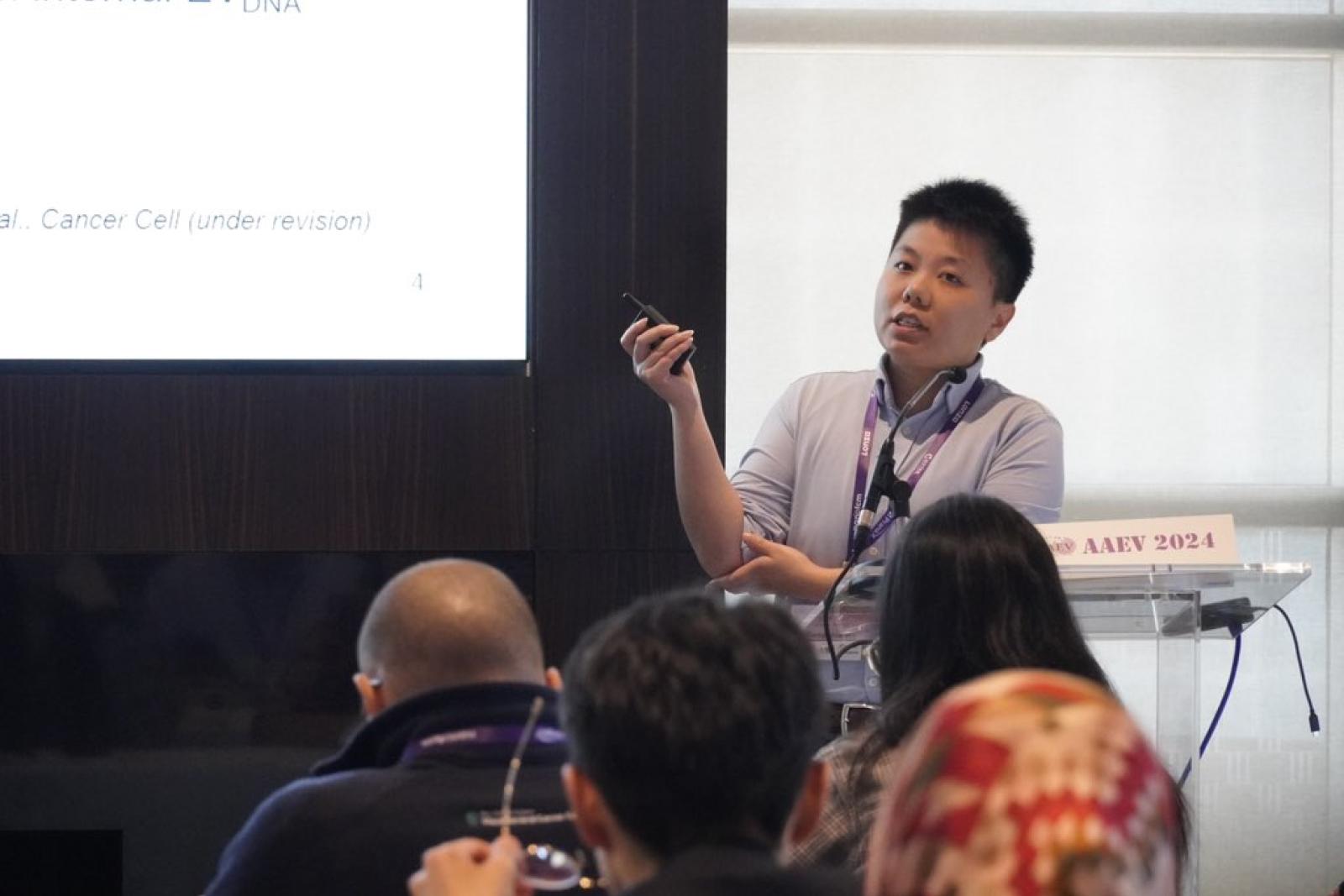From bench to bedside and back again: New faculty member offers practical and lab expertise

Mengying Hu, PhD, is ready to make an impression at The Ohio State University.
The most recent addition to the College of Pharmacy’s Division of Pharmaceutics and Pharmacology, Dr. Hu joined the college in Autumn 2024 as an assistant professor.
With the support of two unconventional lab assistants, her cats, Laifu and Dora, Dr. Hu is providing a new, expert perspective on extracellular vesicles (EVs) and transforming the world of gene therapies.
EVs are cell-secreted particles that transfer proteins, lipids and genetic material between cells, playing a crucial role in intercellular communication.
“EV research is relatively new, but it’s becoming increasingly popular thanks to the role of mediator that the EVs play,” Dr. Hu noted. “Their function is extremely robust due to the amount of information they carry."


Dr. Hu’s passion for pharmaceutical engineering flourished under the mentorship of Leaf Huang, PhD, faculty emeritus at the University of North Carolina, Chapel Hill. It was in Dr. Huang’s lab that Dr. Hu explored innovative approaches to genetic delivery systems and tried her hand at developing non-viral gene therapies.
“As I finished my PhD in 2019, my expertise was to read literature and find interesting drug targets that were already reported on in previous studies,” Dr. Hu said. “I would then use my nanoparticle expertise to develop druggable formulations to be administered in vivo toward those identified targets. But I wanted to have a more active hand in finding my own drug targets and diversifying my research.”
In pursuit of early-stage research involvement, she refashioned her role as a researcher and joined Weill Cornell Medical College as a TL1 scholar in the Clinical and Translational Science program.
“At the medical school, I gained a new level of understanding for disease states through the fundamental sciences,” Dr. Hu said. “My research became more closely related to the patients and gained a higher potential to translate into actual therapies.”
Transitioning to a medical center not only expanded Dr. Hu’s expertise into the worlds of biology and immunology, but it defined her research focus. During her frequent cancer therapy collaborations with David Lyden, MD, PhD, she was introduced to EVs and their potential role in cancer therapy.
As a postdoctoral researcher at Cornell, Dr. Hu uncovered that certain immune cells, like T cells and neutrophils, secrete remarkably high levels of EV-DNA. This abundance of EV-DNA may enhance immune system responses, directing the body’s internal defenses toward cancerous tissue.
Now at Ohio State, Dr. Hu is continuing to investigate how T cell-derived EVs and EV-DNA can be harnessed to boost immune responses.
“The Hoo (Hu) Research Group’s key theme is the rational design of non-viral gene therapy for serious diseases, inspired by the intrinsic nature of EV-mediated intercellular communication,” Dr. Hu explained. “The collaborative and multidisciplinary research surrounding EVs means that I’ll have exciting chances to collaborate at Ohio State and through the medical center.”
As the transplanted Hoo (Hu) Lab settles in at Ohio State, collaborations are already springing up. With a lab space in the Riffe Building and the Ohio State Wexner Medical Center (OSUWMC) across the street, Dr. Hu is finding her happy medium between bench and bedside.